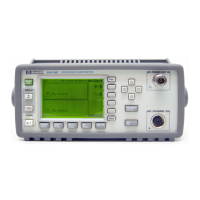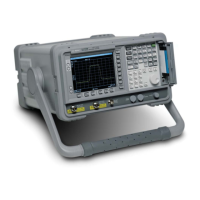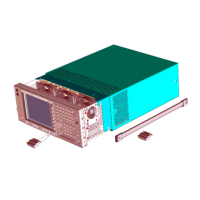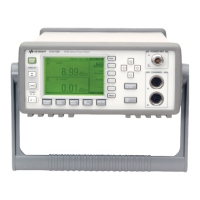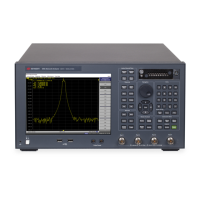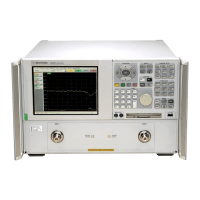92 Chapter 7
Characteristics
SRL Measurement Uncertainty vs Connector Fault
SRL Measurement Uncertainty vs Connector
Fault
As discussed earlier, three factors affect the measurement uncertainty:
• system directivity
• system and test lead stability
• cable connector mismatch
System directivity can be measured by connecting the 75 or 50 ohm load standard to
the test lead connector and observing the magnitude of the highest response. The
highest response is the system directivity.
See “Calibrate the Analyzer” on page 62.
Test lead stability can be measured by connecting the 75 or 50 ohm load standard to
the test lead connector, wiggling the cable and observing the response. See
“Calibrate the Analyzer” on page 62.
The connector mismatch can be improved by the proper connector model. See
“Determine the Connector Model” on page 65.
Minimizing Measurement Uncertainty
The best system performance can be attained by performing a good cal, taking
proper care of a high quality test lead cable, and using the best connector model.
When these three steps are taken, the optimized connector response can be measured
using the “Connector Fault” feature.
You can now calculate the measurement uncertainty using the following procedure
and worksheets. Note that the system directivity must also be included when
computing measurement uncertainty.
1. Convert the system directivity, fault location, and SRL log (dB) responses to
linear reflection coefficients using the following equation:
Reflection Coefficient = 10
(SRL(dB)/20)
2. Compute the sum and difference responses (assume the responses may have a
plus or minus phase).
3. Convert from linear to log (dB) using the following equation:
dB = (20)(Log
10
)(Reflection Coefficient)
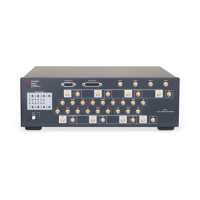
